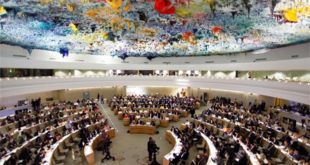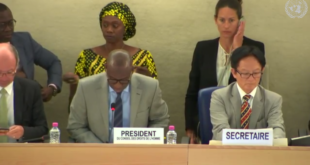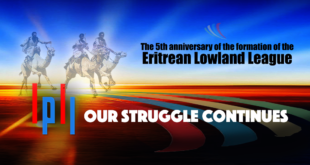On opposite sides of the Red Sea, Yemen spirals deeper into civil war and chaos, while Eritrea accepts foreign cash and commodities for its support in fighting against Yemen’s rogue government. Why then is Eritrea, population 6.3 million, sending tens of thousands more refugees to Europe than Yemen is, population 24.4 million?
Conditions in Eritrea are just that bad. But Yemeni refugees may soon outnumber Eritrean ones, for different reasons, calling for distinct approaches to each refugee crisis. Eritrea, the Horn of African nation bordering Sudan, Ethiopia, Djibouti, and the Red Sea, rarely finds itself in the international news spotlight–though that’s not entirely the news media’s fault. The Eritrean government’s vice grip on its country’s speech and press, along with its routine use of arbitrary detention, torture, and killings of civilians, has branded it “the North Korea of Africa” and the most censored country on earth.
In two decades, over 400,000 Eritreans have fled (nearly 8% of the population), 5,000 every month, many as unaccompanied minors, and in recent years Europe has received more refugees from Eritrea than from any other African country. But in media coverage of Europe’s human influx, Eritreans are often thrown in beside Syrians, Iraqis, and Afghanis, implying that Eritrea is just another African warzone, some primordial ethnic squabble. Such simplifications will inhibit the integration of these refugees and the resolution of Eritrea’s outflow.
Eritrea was its own colony under the Italian Empire, but the UN forcibly fused it with newly independent Ethiopia in 1961. The Eritrean War for Independence immediately followed, raging until Eritrea won its sovereignty in 1993 (and resurging in the 1998-2000 Eritrean-Ethiopian War), breeding regional hostilities and territorial disputes that still smolder.
As a result, President Isaias Afwerki–the only head of state that independent Eritreans have ever known–conscripts all able-bodied men and unmarried women into the Eritrean Defense Forces, often for several decades. Military training can start for children as young as 15, and duties can continue into men’s 50s, 60s, and 70s,according to Human Rights Watch. While only some conscripts will find themselves battling Ethiopian troops at their border or on Djiboutian and Somali soil (even alongside Al Shabaab militants) or joining a US-backed coalition against the rebels that toppled Yemen’s government, many Eritrean parents would rather trust their children with Europe-bound human traffickers than subject them to the forced labor that most military members suffer.
If Eritrean journalists were not so often jailed for offending their government, President Afwerki would be held accountable for scores of horrendous human rights violations, including the persistent restriction of speech, expression, and assembly, the 2001 shutdown of all independent press, the banning of opposition parties, the ongoing violent persecution of religious minorities, and the abuse of drafted military personnel.
Understanding that Eritreans are fleeing a repressive state, as opposed to a war zone, is crucial for our approach to the causes of their refugee crisis and to the refugees themselves. Its government should not be valued for any strategic military importance, or courted as a stabilizing force, or paid off to keep its people at home. It should be pressured as a rogue state, its refugees should be empowered to shed light on conditions in the country, and Western powers should throw economic and military weight behind its citizenry, rather than its ruling party.
If nearby Yemen’s descent into civil war offers anything, it is an important demonstration of the varying situations that refugees flee and of the diverse approaches Western powers should take to the worst refugee crisis since World War II.
Yemen’s Houthi rebel group has caused clashes in the country’s north for years, but the conflict only entered civil war status in early 2015, when the Houthis overthrew Yemen’s transitional government, put in place after 2011 Arab Spring protests ousted the former president’s 22-year rule.
Yemen’s internally displaced population has quickly expanded from a few hundred thousand to 1.5 million. Some say that the war in five months has left Yemen looking like Syria after five years. So far, about 100,000 people have fled the country, 60,000 of which are East Africans returning home. Much poorer and further south than Syria, Yemenis have been largely unable to join Syrians on their passage to Europe. But dangerous routes out of Eritrea may soon expand to accommodate millions of Yemenis with nowhere else to turn.
Yemen has undeniably become a war zone; its refugees are fleeing to save their lives and their futures, with a different kind of mortal urgency than that which spurs Eritrean refugees (who, in the words of one UN spokesman, are “voting with their feet”). Both groups seek and deserve safe haven, but for different geopolitical reasons: while Yemeni refugees should be welcomed in order to minimize human tragedy while the war travels its rickety course of violence and diplomatic setbacks, Eritrean refugees should be welcomed in order to strengthen international opposition to the Eritrean regime and politically embolden its diaspora.
Professionals who work with these refugee populations, like immigration officers, therapists, and social workers, should also heed these differences. Whereas Eritrean refugees grew up brutalized by one government that they eventually found unbearable–potentially fostering extreme mistrust of government and aversion to rules and regulations–Yemenis grew up with a government and way of life that they may not have enjoyed but whose breakdown (from 2011 on) nonetheless came as an unexpected rupture, an eventual blow to revolutionary hopes and expectations, and a new impetus to flee, potentially breeding a skepticism of change and a restless fear of future crisis.
As over a million refugees from the Middle East, Africa, and Asia have landed (orwashed up dead) on European shores over the past year, many sympathetic observers have joined the call for equal rights for refugees. But as Eritrea and Yemen make clear, not all refugees are created under equal conditions, a crucial reality for anyone who wishes to see these equal rights become a reality.
Kerry Martin is a freelance writer and an organizer of immigrant communities in Brooklyn for the ArchCare TimeBank.
Source:THEWORLDPOST
 ELL Eritrean Lowland League
ELL Eritrean Lowland League




